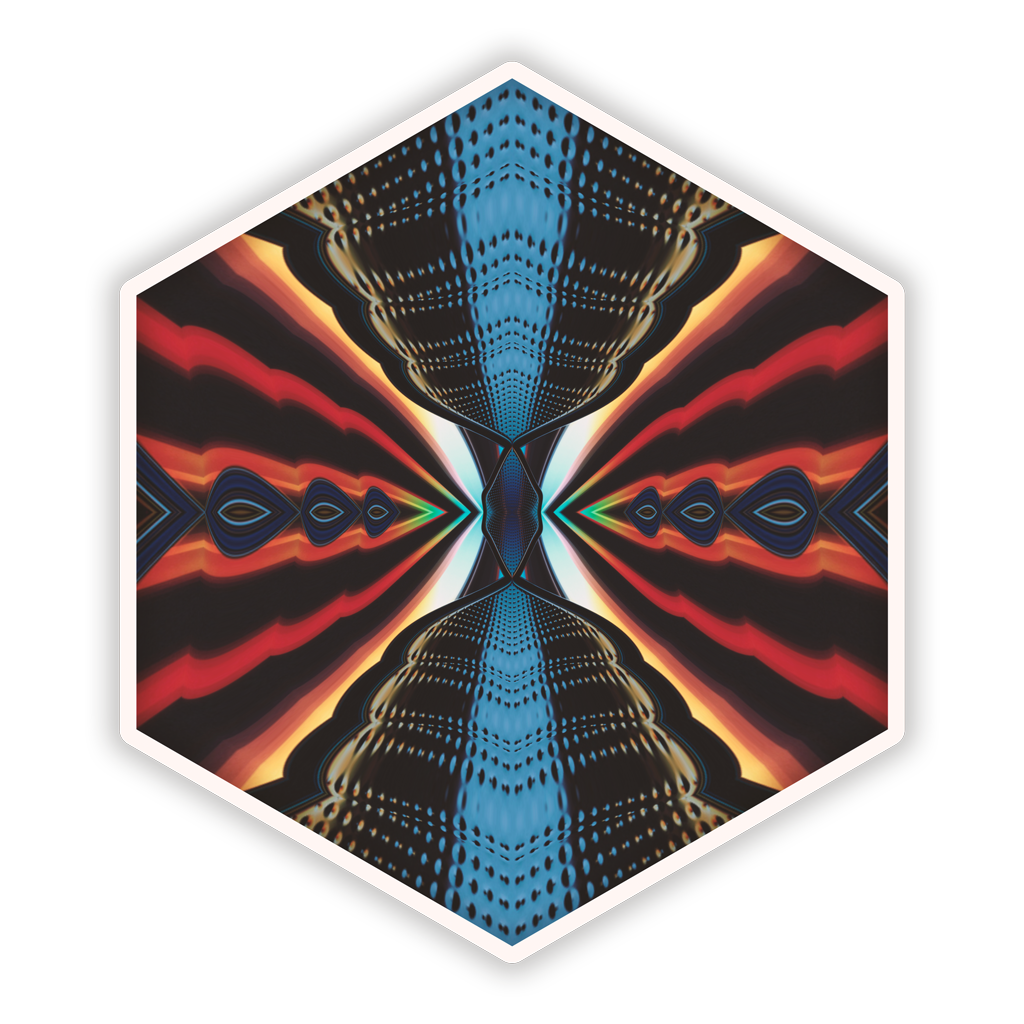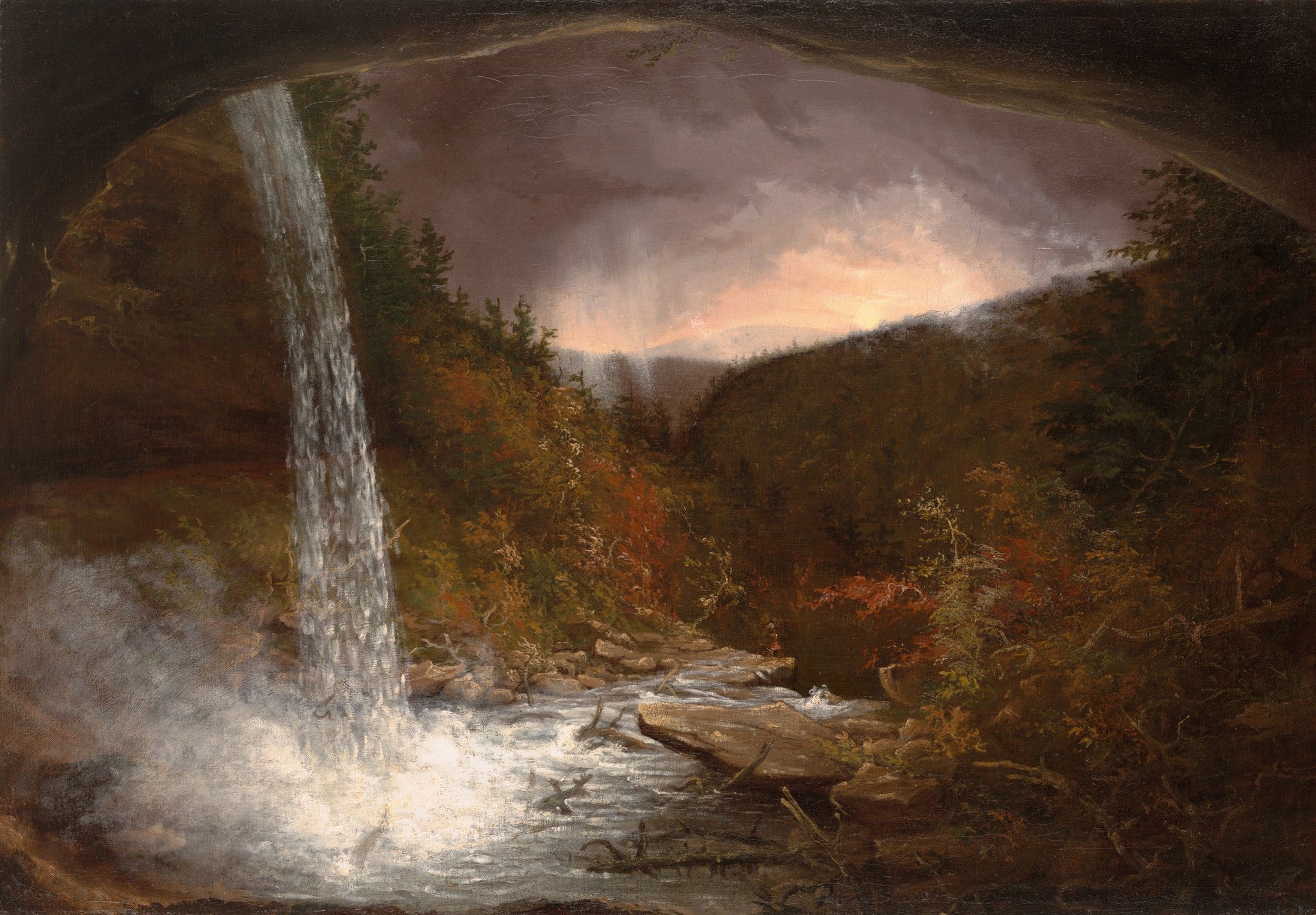Psychedelics as Catalysts for Recovery
Drop the bucket, open the dam, and let life spill out
Imagine yourself standing before a barren riverbed, the ground caked with dust. A stale odor owns the air. The riverbank might crumble at the slightest touch. The scene is a void of life.
Just beyond the bend, your eyes fall upon the towering walls of a dam—a formidable barrier erected by a corporation to prevent the flow of a mighty watershed. You observe two figures, garbed in white, tiptoeing past a security guard before disappearing into the control tower like ninjas. Five tense minutes later, an alarm pierces the air, and the walls of the dam begin to slowly part.
With a roar, water begins to gush through the breached walls. You watch as the land is remade before your eyes. What once was a desolate riverbed is now a vibrant ecosystem, awash with the crystal-clear waters so long denied.
You can’t help but grin knowing that your comrades have accomplished Stage I of your mission. Some prominent media and cultural personalities characterize your efforts as either “recklessly irresponsible” or, even worse, “eco-terrorism.” But you and the squad prefer to think of yourselves as eco-activists. In the months ahead, you’ll keep the water running clear and free, diligently guarding the surrounding land, until it is full of chirruping birds, leading fish, and frogs croaking their little hearts out.
Yes, it’s one riverbed, one river, one river valley full of life—and that’s all. Hardly a country or a continent, or a world. How could one patch of refreshed grass, with its new batch of critters to crawl among it, save a whole dying world?
Now, extend this image of a dying world revived with that of a dying mind restored to its essence through a sound regimen of psychedelic therapy. When introduced in a safe and supportive setting, psychedelics have the power to help individuals facing addiction move towards recovery faster, but also in ways that allow them to embrace Life over Death (literally and figuratively). Keep in mind, psychedelics are not the water in this metaphor. They are the tug on the lever that breaks the dam wide open, allowing the natural waterway to flow swiftly, effortlessly, and eventually, completely.
And, to keep the metaphor flowing, as water finds its way into every nook and cranny of a patchy riverbed, classic psychedelics1 can rejuvenate and reimagine burnt-out neural pathways. In some cases, for individuals like me, these pathways have been obstructed and dry for decades, clogged with toxic chemicals and equally toxic ideas (e.g., “work will save me”).
Psychedelics aren’t utilized in recovery so as to skip steps or bypass; rather, they offer entry to the escalator.
In a groundbreaking study released in February, it’s now understood that psychedelics have the unique ability to penetrate beneath the cell surface—literally inside nerve cells in the brain’s cortex—to unleash their therapeutic effects. Previously, it was believed that serotonin regulation alone was enough to restore impaired brain function to normal levels, by lowering anxiety and improving mood. But this research suggests that the receptors responsible for neural growth are actually located far deeper inside the cell—a place too deep for serotonin to reach. Enter “greasy” psychedelics like LSD and DMT (the active compound in ayahuasca), which can easily pass through a cell’s fatty outer layers and reach these receptors, promoting neural growth.
This means that psychedelics do, in fact, have literal mind-expanding properties. And as even newer research details, in addition to the mind, psychedelics like psilocybin and ayahuasca seem to restore the gut’s microbiome, or the “gut-brain.” Unless you’ve been living under a rock and missed the “blessings and kombucha” boom, you’ve probably heard about how consuming foods that promote diverse gut bacteria can directly impact your energy levels, cognitive function, and overall well-being.2 A healthy gut doesn’t look too different from a healthy river ecosystem. And when it comes to addiction, psychedelics seem to revitalize the neural pathways in the body’s “three brains” (the gut, heart, and brain). By applying natural forms of lubrication, this trio of riverways can begin flowing in unison, replenishing one another to aid the path of recovery.
Too many presume people battling addiction reach for psychedelics as a quick-fix panacea, that final drug to solve all the problems too terrifying for them to work out “on their own.” As I outlined in “Addiction and Ayahuasca,” I think this characterization misses just how much courage it takes to break into the control tower and pull the damn lever! Ceremonial psychedelics are far more intense than an evening gobbling drugs with friends, when Scooby-Doo’s profundities feel all the more profound. These therapeutic experiences require individuals to sit still and confront their darkness.
In the same way I would not describe basic training as a “shortcut” to physical discipline and building team spirit, I would not characterize classic psychedelics as a shortcut. Rather, in concurrence with preparatory lessons and subsequent integration, psychedelics offer an intense short-term education, a curriculum where people dig into the source of trauma and pain at the heart of their addictive cycles. Or, to stick with today’s more naturalistic metaphor: a dam releasing water into a dried riverbed is not a “shortcut” to renewing life. But it is faster than using a bucket.
Far from a shortcut, indeed, many people facing addiction approach psychedelics as a last-ditch effort at the end of a long, long list of failed alternatives where they have tried extremely hard to get better. That’s what most people seem to forget (or choose to ignore)—how much it hurts to be caught inside a shame-inducing cycle that you know, deep down, you don’t want to be in, but nonetheless, you can’t seem to escape.
Many of the participants we work with at Natura Care Programs, our addiction and spiritual care non-profit, have been through dozens of treatment centers and detoxes. They have tried, in earnest, to stop turning to substances, people, food, and processes for temporary relief—because in cases of severe addiction, the condition is awfully more deep-rooted than any one “object” can solve. This is why when a person relapses, they often find themselves hitting rock-bottom levels of pain and despair horrifyingly fast. The neural architecture underneath severe addiction typically remains intact, which explains the countless cases of cross-addictions, where you swap one drug after quitting another.
It doesn’t help that, as I often write about our cultural and economic climate, the cards are stacked against people who need recovery.3 In a capitalistic market singularly focused on outer measures of worth, addiction treatment becomes disincentivized. We glorify the appearance of chiseled abs and ageless beauty instead of celebrating the inner experience of health and well-being that cannot be so easily bought through a new Instagram-advertised app. Despite well-intended efforts, our current methods of treating addiction fall catastrophically short, with far too many good people falling through the cracks of a fundamentally flawed system. In the same way that you cannot “buy” a riverbed packed with a diverse ecology, you also cannot purchase a long-term path to addiction recovery. You can only look for remedies that enhance your odds by working with your biochemistry to reinvigorate suppressed riverways and streams.
“The main interest of my work is not concerned with the treatment of neuroses but rather with the approach to the numinous. But the fact that the approach to the numinous is the real therapy, and inasmuch as you attain to the numinous experience you are released from the curse of pathology. Even the very disease takes on a numinous character.” —Dr. Carl Jung
Watching water return to a dry riverbed, scientists understand the basics of how life might regrow—from fertilization to plant and animal symbiosis. But these scientific terms are merely fingers pointing at the moon. All scientific knowledge, like all knowledge, is only one piece of the larger story. There’s a qualitative aspect of Reality that cannot be reduced to quantitative measures. The evolutionary life force that flows through you, me, and our rivers can be felt within us, but it cannot be named. The numinous.4
It’s the same with psychedelic therapy for addiction, where more is happening than any essay, paragraph, or word can illustrate. The dialogue about psychedelic medicine struggles to communicate the curative mystical experience they offer. There’s a wholly mysterious aspect to entheogenic compounds like ayahuasca and psilocybin, a type of mystical super-plant-intelligence that will likely sound woo until you’ve encountered it for yourself and tasted melody on your tongue.
Fortunately, though, there is a scientific term that points to the spiritual encounter that can heal addiction—it’s known as a VSE, or “vital spiritual experience.”5 This is because, as Dr. Jung suggested, sometimes, an encounter with the numinous is so profound, a person facing addiction is left forever changed, able to take refuge in a universe much bigger than themselves (or their substance of choice).
Perhaps the hardest thing for an addict to do is to believe stopping is even an option. The best reason for using psychedelics in the context of recovery, then, is to give hope to the hopeless. Because if they don’t believe stopping is even possible, they won’t engage in the process of stopping. Psychedelics can prove an elegant, albeit explosive, sidestep into addiction recovery for even the least hopeful among us.
As the dam water helps life return to the riverbed, psychedelics help potentiate a person’s engagement in the recovery process.
They reestablish a connection to one’s motivation. They help reveal that change is not only possible but that it also wants to happen on its own. In other words, the healing current of life always yearns to flow through us, even when it’s impeded by a dam—the water wants to fall! For people who have been struggling for years, psychedelics help get them back into the game in an entirely new way. To borrow from Jack Kornfied, one of my favorite dharma teachers: If you bring a lamp into a dark room, it doesn’t matter if it’s been dark for a day or 100 years, it will be illuminated.
In essence, psychedelics illuminate the mind, offering light and hope in caverns of the mind-body turned cold and dark. You’ve likely heard how psychedelics interrupt the brain’s default mode network via predictive processing, which allows individuals stuck in a harmful cycle to shift from their normal day-to-day existence and see new, “third person” perspectives on their lives, in some cases, “observing” their experience for the very first time.
But it’s seldom the psychedelic itself that produces lasting change. Psychedelics can be relatively agnostic, unspecific amplifiers of the unconscious. They don’t care whether a person is into the 12 Steps, regular talk therapy, Buddhism, ecstatic dance, or the Electric Boogaloo. They simply help the life-positive, intelligent, and self-directed healing force that dwells within all of us to flow more readily. Said another way, psychedelics are not just additive—they are multiplicative. Like the water returning to the riverbed, the effects of psychedelics multiply the effects of other recovery methods, especially when they are done in settings that support holistic health and introduce people to time-tested recovery traditions.
And those who do this work responsibly never just give individuals facing addiction a psychedelic journey and then call it a day.6 That would be like busting open the dam, letting the water gush out, wishing it all the best and wondering what’s for lunch. No, when this approach is done adequately—with ample time for preparation, integration, and exposure to complementary recovery and therapeutic modalities—it takes months, even years. As a result of this calibrated exposure and care, and regardless of what happens in the psychedelic journey itself, people often become interested in recovery traditions or psychological ideas they once mocked, as I did.
Addiction is a complex monster that requires a tailored approach suited to everyone’s unique biology, psychological makeup, social setting, and spiritual disposition. The new story of addiction and sobriety is about neither dogma nor abstinence but supporting the diversity of life within our own personal ecosystems. This involves individual and group counseling, spiritual guidance, communal support, and actionable plans for future endeavors that account for the whole human experience.
Even more notably, through this process, psychedelics possess the rare ability to help people with years of “sobriety” facing an arduous stale patch recommit themselves to recovery. It’s extremely common to brush up against the limits of your initial recovery methods and feel disenchanted. Psychedelics ignite “second-stage recovery,” which is when you outgrow your original recovery methods only to venture into the deeper emotional and spiritual work of finding your path again. In fact, I would argue that this is one of the fastest-growing demographics in the recovery landscape. Every day, earnest people deeply committed to recovery are seeking to expand their perspective and approach through the intentional use of psychedelics. Some of them feel inspired to re-commit to their existing recovery community, others find new groups, and a few others decide to drop the “addict” and “recovery” labels entirely and just be. Second-stage recovery signifies the moment when the threat of relapse, of the river running dry, truly diminishes.
I’m lucky enough to know this because my inbox reminds me so.
Classic psychedelics = ayahuasca (DMT), magic mushrooms (psilocybin), LSD, and peyote (mescaline). Iboga belongs to a distinct category of psychedelics, but it has proven to be incredibly successful in fighting opioid addiction—therefore, it should always be considered when discussing treatment options. MDMA and ketamine are also in the “non-classic” category but should be approached with caution by individuals dealing with addiction, as the former has stimulative properties and the latter has sneakily addictive qualities. And all psychedelics carry risks.
Virtually everyone who owns an iPhone needs recovery, or could at least benefit from its principles of ownership, self-care, relational accountability, and communal engagement.
Throughout his body of work, Jung used “numinous” in the vein of Rudolf Otto, one of his German professorial contemporaries. It means “holy” without the “moral factor” or religiosity that one typically attaches to “holy.” It refers to both categories of value and states of mind that can arise inadvertently. Or, to define the word in simpler terms—the spiritual, divine, awe-inspiring, and ineffable. For all Jung’s insights and contributions to the field of psychology, he believed nothing to be more important than an encounter with the numinous.
Some claim that Bill Wilson, a friend of Dr. Jung and the co-founder of Alcoholics Anonymous, had his “white light” VSE from the psychedelic plant belladonna, leading him to become an advocate for psychedelic-induced VSE’s. While we know Bill took belladonna during his final detox, there’s much debate over whether it directly inspired his “white light” experience. This nuanced topic was further complicated by Michael Pollan’s declaration in How to Change Your Mind that Bill’s white light experience directly proceeded his first belladonna dose, which critics claim was done for commercial readability at the expense of fact. Nonetheless, we know for certain that Bill was a proponent of LSD to treat alcoholism later in life, and that psychedelics undeniably supported his recovery path.
Because psychedelics are multiplicative: if a person in recovery is introduced to bad ideas and poorly facilitated psychedelic practices, the results can be disastrous. Unfortunately, the psychedelic and “transformational” industries are filled with opportunistic and narcissistic individuals. These fields tend to attract “wounded healers” who, tragically, have not done enough work on themselves to maintain ethical integrity. If you’re exploring this path of recovery, please intently research the people conducting it.







I'm deeply appreciative of your knowledge, experience and insight in this area.
I've recently been made aware that a licensed psychedelic assisted therapy center has opened in my town and I am somewhat eager, but
still trepidatious and wary, to try this therapy. As someone who is neurodivergent and suffering from trauma/mental illness/etc., I'm wondering if the effects/experience/outcome/ would be the same or similar or if it would become dangerous? I would appreciate your thoughts. Thank you!
This was a truly wonderful post, I shared it with many. Love from Glasgow, Scotland, via Tel Aviv.